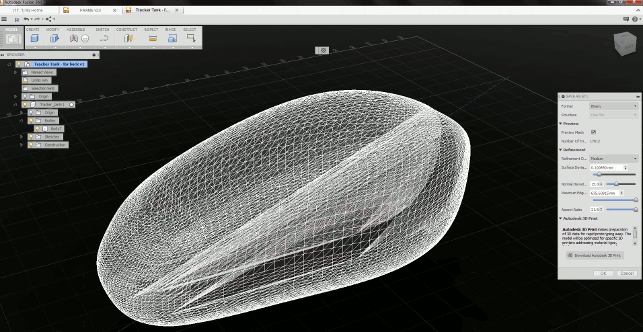Who gets to decide who a tool is suitable for? Al Dean takes a look at a growing trend in the 3D world that segregates the consumer from the professional and wonders if it should be the users or marketeers deciding which is which
While watching the news coming out of the CES show in Las Vegas I was struck by something that had been niggling away at the back of my mind for the last few months. And it relates to whether a tool is targeted at the consumer or the professional.
I’d been considering this ever since a conversation with a software executive about how they considered their tool to be “for the consumer” and not appropriate for the “professional.”
At DEVELOP3D, we pride ourself in addressing designers and engineers with language and context suitable for a professional environment.
Whether we’re talking about software, hardware or a combination of the two, the question we try to ask ourselves is, “How might this tool be used as part of the daily workflow of someone engaged in design or engineering as part of their professional work?”
Yes, of course, the rise of the term “Maker” has meant that the lines between the amateur in a shed and the professional in an office are blurred. And speaking as someone writing this article, in a shed, I realise this duality. So what got me all riled up about this consumer vs. pro again?
Easy now tiger
It was at CES that 3D Systems launched a number of consumer products.
While I can understand there’s a need to push its devices into the mainstream, the fact that it’s actively discouraging professional customers from looking at these things concerns me.
Say what you like about the organisation, its recent development and announcements have been interesting for those looking for both 3D print solutions as well as laser scanning devices.
One in particular, the Sense, is interesting because it’s a hand-held laser scanner. Laser scanning is one of those curious technologies that is incredibly useful in experienced hands. Being able to capture a digital model of a form and integrate it into the design process is very powerful.
Reference models are common and it’s useful to be able to create these without knife and forking it with a tape measure, a set of calipers or other measuring tool.
Low resolution means low expectations?
The Sense is a low-resolution device. Its accuracy is quoted at around the 1mm range.
For those used to higher-end devices, this seems particularly rough around the edges, but there is certainly room for a sub-300 quid device in the market for the professional.
Imagine being able to capture a scan of a large object, manipulate it onscreen and use it as a reference. Being able to do this without spending 1,000s of pounds on hardware and software is very attractive.
Yet the company insists this is for the consumer to take (excuse me while I swallow a little bit of bile) “3D selfies”.
I would disagree and say that amongst the 100,000s of designers and engineers in the world, being able to laser scan a rough model of an object is far more valuable than a consumer paying for a device they’ll probably use once and leave in a box.
Another case in point
Don’t misunderstand me, 3D Systems isn’t alone in this.
Another example that cropped up recently is in Autodesk’s 123D applications — specifically, 123D Make.

3D Systems’ Sense 3D Scanner
This is a ‘maker focussed’ tool that’s given away in a basic form for those experimenting with laser cutters and the like to take a 3D model and build something out of sheet material. Not much use for the pro, right?
In fact, this software is perfect for the pro and can be used as follows. Take a digital model that you’re looking to fabricate from sheet metal. I mean, hand shaping and welding it — such as a motorcycle tank. If you’re familiar with the process, you’ll be aware of using a buck just as they used to do in the automotive industry in years gone by.
The buck serves as the master for the metal working process and gives guidance for the shaping process.
Well, it turns out that taking a digital model of the form you want, running it through 123D Make to build the shape from sheet plywood, laser cutting it and assembling it, works perfectly.
And your point is?
When all is said and done, this, on reflection, doesn’t really matter. After all, with vendors focussing on the consumer, it means that the professional gets access to a larger number of interesting tools at a vastly lower cost than previously would have been the case.
What I just wish would happen is that targeting the consumer didn’t mean that the professional gets ignored as we have the most to gain.
The growing trend to segregate pro and consumer tech
Default







